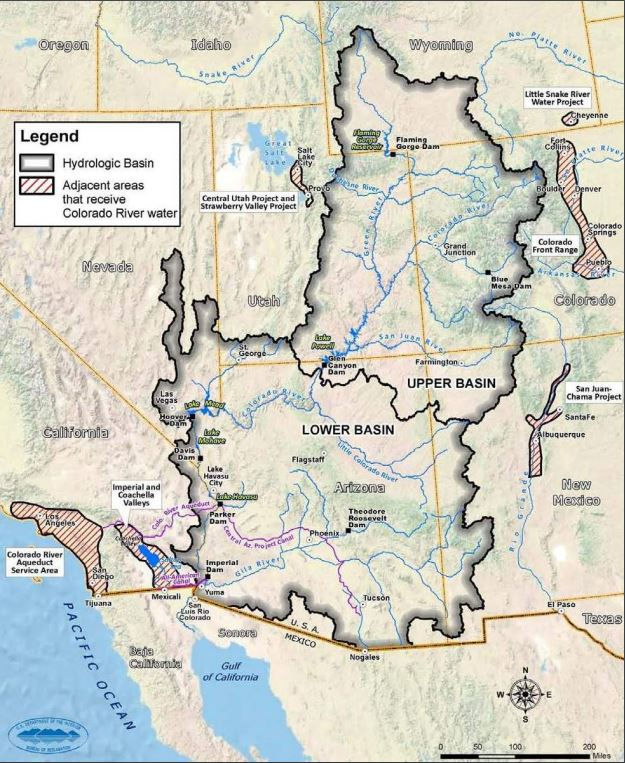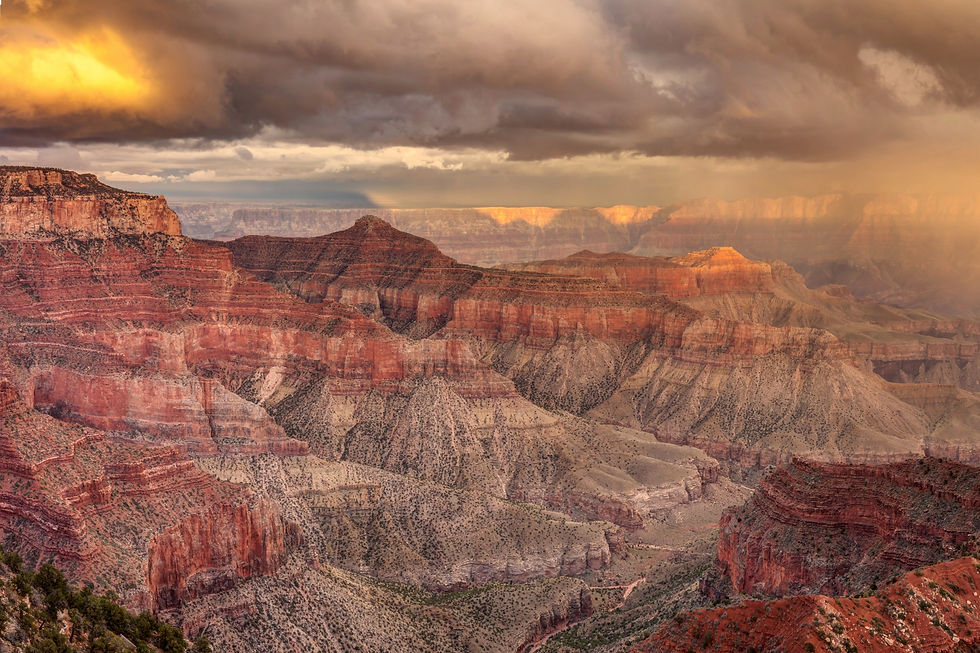The Colorado River
Updated: Apr 5, 2020
Do me a favor: Walk over to the nearest sink. Turn on the tap.
What do you see? Clear water? Drinkable water?
Do you ever have to worry about that water running out?
Water is a fundamental need for life. Luckily, in the developed world we rarely have to worry about where we'll find our next glass of it. We have plentiful sources for drinking, bathing, washing our clothes and dishes, cleaning our houses. But have you ever thought about how that water gets to you?
For February's 'Take Action', I'm not asking you to write your senator or give up plastic for a week. For this month, I just want you to consider that one question: where does my water come from?
We're going to dive into this issue (haha!) by studying one of the most contentious water ways in the United States: the Colorado River.

The Colorado River is a major river system that weaves through the southwestern United States. Its waters carved the extraordinary contours of the Grand Canyon. It serves as a crucial source for over 30 million people in the booming metro areas of Denver, Salt Lake, Albuquerque, Phoenix, Los Angeles, and San Diego. It irrigates some 4 million acres of agricultural land, which produce important domestic food sources for the nation (link). Dams like the Hoover and the Glen Canyon provide hydroelectricity and reservoirs. In addition, the Colorado sustains wildlife and their habitats, and provides a setting for outdoor recreation, a major economic driver in the region.
With all of these competing demands, there are constant battles occurring over how the Colorado's water is allocated and who gets primary rights to it. And as climate change begins to exacerbate drought and population growth places increasing strain on the River's limited supply, these battles are growing in urgency.
Even if you don't live in the Southwest, The Colorado provides a great case study in understanding where our water comes from, who competes for it, and how civic and environmental leaders go about making decisions on it. Regardless of where you live, it's important to draw back the curtain and understand the mechanics of how this resource arrives at your nearest tap.

Read:
Crisis on the Colorado
This five-part series from Yale's e360 blog gives a wonderful perspective on the many stakeholders that have an interest in the River's allocation. From municipal providers to farmers to ecologists, these articles illuminate how vital all rivers (not just the Colorado) are for our planet's symbiotic survival. (Read here).
Water Rights in the West
Admittedly, this is a bit of a nerdy recommendation, but it's worth at least skimming this brief primer to familiarize yourself with water rights. Water in the West is allocated differently than it is in the East, and this doctrine of 'prior appropriation' a source of major contention all along the Colorado. (Read here).
Beyond the Hundredth Meridian: John Wesley Powell and the Second Opening of the West, by Wallace Stegner
I recently finished reading this book, about the first thorough exploration of the Colorado in the 1870s by John Wesley Powell. In addition to being a great adventure story, it really illuminates how fundamentally different the West is when it comes to water access. This book really makes you think about the over-population of the West, and how tenable it is to maintain the sprawling metropoles that we currently have throughout the region. (Buy here).
Cadillac Desert: The American West and Its Disappearing Water, by Mark Reisner
Full disclosure, I haven't read this one yet. But it's been recommended to me so many times that I'm including it here for your reference! From what I've been told, this book should be required reading if you're a citizen in the Western states. (Buy here).
Listen:
American Rivers Podcast
The American Rivers podcast explores the importance of rivers to all life. Start off at the beginning, with Episode 1, 'the Value of Rivers', which looks into the incredible economic activity generated by the Colorado. (Listen here).
Watch:
Into the Canyon
Photographer Pete McBride and writer Kevin Fedarko walked the entire 750-mile length of the Grand Canyon in order to understand the Canyon's unique topography and the challenges that are being faced in preserving it from over-tourism.






Comments